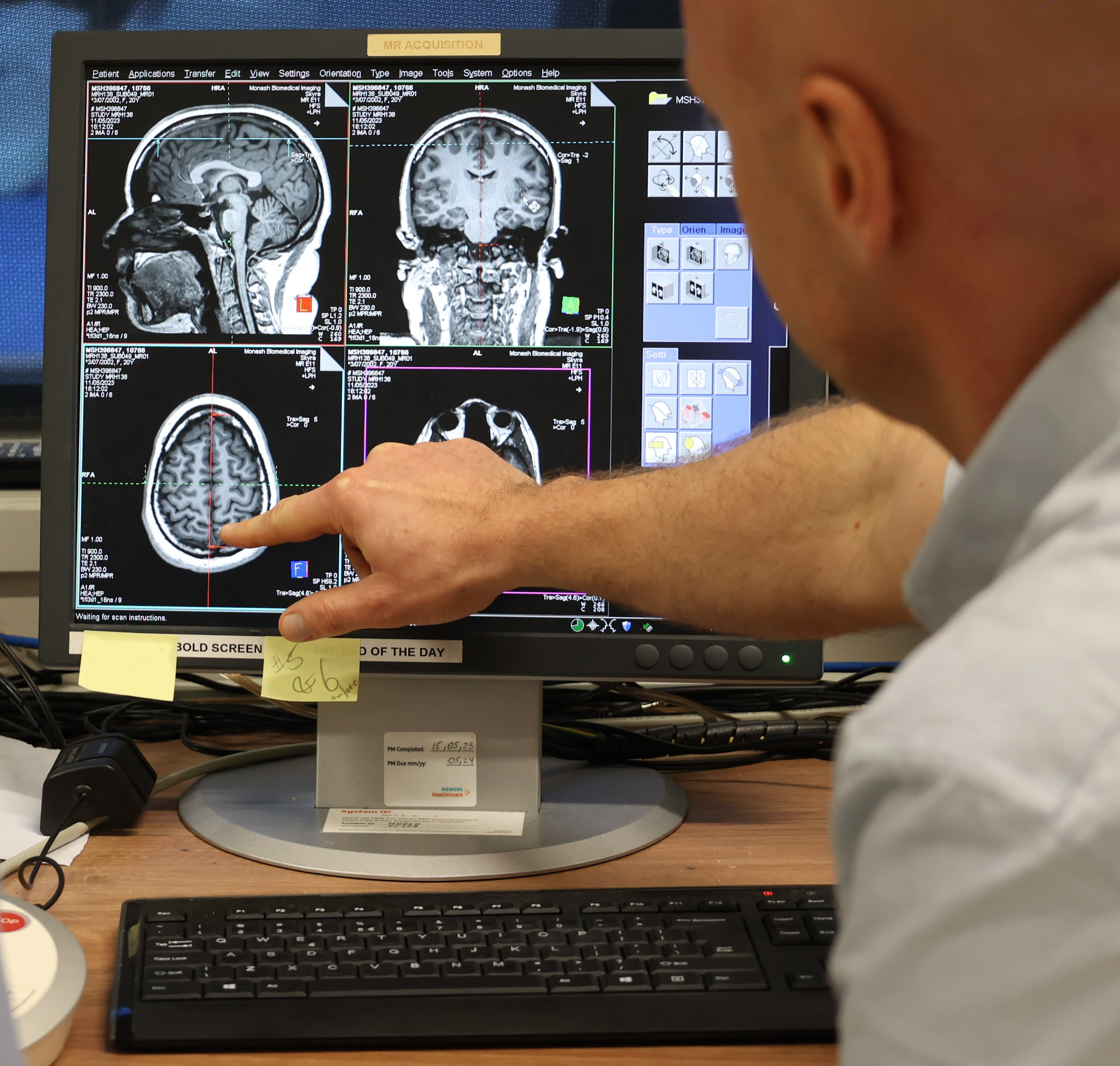The science of this game-changing Monash-led research is complicated. But also, in the end, pretty simple. The shape of your brain is much more important than scientists have previously thought, learning now that how we think, feel or behave is associated with activity patterns that span nearly the entire brain, rather than just specific parts of it, overturning the accepted wisdom for more than 100 years.
-
James Pang
Research Fellow, Psychology, Turner Institute for Brain and Mental Health, Monash University
-
Alex Fornito
Professor (Research), Psychology, Turner Institute for Brain and Mental Health, Monash University
The paper outlining this major advance in neuroscience is now published in the prestigious journal Nature. Its lead authors are Dr James Pang and Professor Alex Fornito from the Turner Institute for Brain and Mental Health, and Monash University's School of Psychological Sciences.
"We're trying to change how we view the brain," says Dr Pang. "The traditional approach in neuroscience is that every brain process is attributed to just one particular region, in a very local part of your brain, but it's only recently become possible to study the entire brain at once in living humans, with advances in technologies like MRI."
The researchers, both physicists and neuroscientists, examined more than 10,000 different maps of the human brain as people performed different tasks. They found that the shape or geometry of the brain influences the patterns of brain activity seen on the maps more than the connections between brain regions, as previously thought.
Professor Fornito uses an analogy from the great outdoors to describe this finding:
"The close link between geometry and function is driven by wave-like activity propagating throughout the brain, just as the shape of a pond influences the ripple patterns that are formed by a falling pebble."
They focused on what is called an "eigenmode", a common term used in physics, which in the brain is a preferred pattern of excitation.
"The best way to understand what eigenmodes are," Dr Pang says, "is to think of a violin. Every time you pluck its string, it vibrates with some pattern, and this pattern corresponds to the notes that you hear. The preferred patterns of vibration are the eigenmodes of the string."
Some patterns cover the entire brain, some are highly localised.

"There are many eigenmodes, and every single eigenmode encodes a different frequency. And all of them can combine in various different ways to support whatever brain processes that you can think of.
"It means the idea that only certain neurons in a certain part of the brain are working when you do something is probably inaccurate, because other parts of the brain are also contributing."
The paper compares eigenmodes derived from brain shape with those obtained from region-to-region connectivity, and finds that the eigenmodes of brain shape can have a stronger influence on brain activity. The brain's "shape" in this context considers the size, shape and contours of the human cortex.
"Just as the resonant frequencies of a violin string are determined by its length, density and tension, the eigenmodes of the brain are determined by its structural, physical, geometric, and anatomical properties," Dr Pang says.
Predicting brain patterns
The researchers suggest they should be able to predict different patterns of brain activity simply using its shape.
"The work opens opportunities to understand the effects of diseases like dementia and stroke by considering models of brain shape, which are far easier to deal with than models of the brain's full array of connections," he says.
"People with dementia, for example, have atrophy in certain parts of the brain, which may change the activity they can support."
Dr Pang acknowledges the "mind-boggling" nature of the paper, and the way it turns existing science on its head. It's a new way of thinking about the organ that does all our thinking - and it takes some thinking about.
"Our paper itself had two problems that we were trying to solve," he says. "First is, we move away from the usual view that mapping the complex array of cells and their connections in the brain is necessary to understand how it works. Instead, we show that brain shape may actually be more important.
"We're still getting our heads around what that means for understanding brain function. The second problem concerns applications. The approach creates new opportunities for brain mapping in different species, through development and ageing, and in different brain disorders, leading to new research directions not just for us at Monash, but people everywhere."






